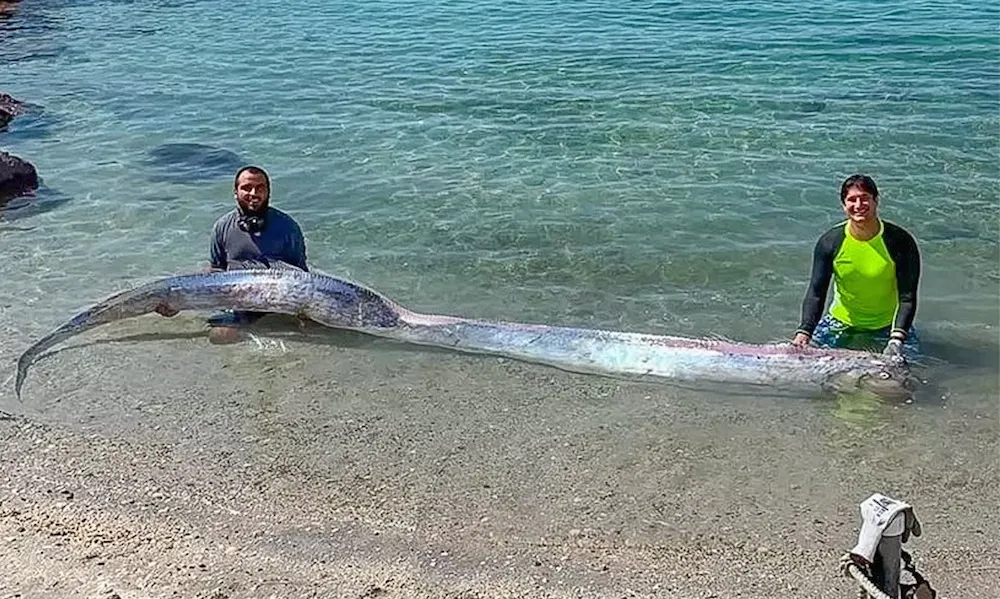Oarfish Mystery: Why This Fish is Feared Worldwide?
- The oarfish, also known as the “Doomsday Fish,” has recently become a topic of global discussion.
- This deep-sea fish was spotted on the shores of Mexico, attracting attention due to its striking appearance and mysterious nature.
Characteristics of the Oarfish
- It has a shimmering, glass-like body and can grow up to 7 meters or more in length.
- Some species of oarfish have been recorded at 11 meters in length in deep-sea environments.
- The American Navy has documented an oarfish approximately 7 meters long.
- These fish thrive in deep-sea waters, often found at depths between 77 to 660 feet (200 meters) and sometimes as deep as 3,300 feet (1,000 meters).
Behavior and Habitat
- Oarfish are not dangerous to humans as they lack teeth and feed by filtering tiny marine organisms.
- A fascinating fact: you could place your entire hand in its mouth without being harmed.
- Due to the extreme depths where they reside, little is known about them, and sightings are extremely rare.
- Oarfish generally remain in the deep sea but may surface at night in search of food before returning to the depths during the day.
The Myth of the “Doomsday Fish”
- Many cultures, especially in Japan, believe that the oarfish is an omen of natural disasters.
- It is said that before the 2011 Japan earthquake and tsunami, several oarfish were seen washing up on Japanese shores.
- This belief stems from the idea that deep-sea creatures can sense seismic activity or environmental changes before humans do.
Scientific Perspective
- There is no scientific evidence proving that oarfish can predict natural disasters.
- Some animals, such as snakes, birds, and elephants, are known to react to seismic activities due to changes in electromagnetic waves and infrared signals.
- Marine animals, including dolphins, may also sense pressure changes before an earthquake or tsunami.
- Some scientists suggest that oarfish may respond to magnetic field shifts caused by tectonic activity, but this remains unproven.
Alternative Explanations
- The increasing frequency of oarfish sightings near shorelines could be due to:
- Rising ocean pollution.
- Changes in ocean temperatures affecting their habitat.
- The fish being sick, injured, or caught in strong ocean currents.
- Some researchers argue that past sightings of oarfish before natural disasters could be coincidental, rather than a sign of prediction.
Conclusion
- The “Doomsday Fish” theory remains a myth rather than a proven fact.
- While the oarfish’s appearances before disasters are intriguing, scientific research does not support the claim that they can predict earthquakes or tsunamis.
- The deep sea remains largely unexplored, and many of its mysteries, including the oarfish, are yet to be fully understood.
What are your thoughts on this fascinating fish? Share your opinions in the comments!
If you found this information interesting, don’t forget to like, share, and stay tuned for more intriguing content.
Thanks for watching! 😊

